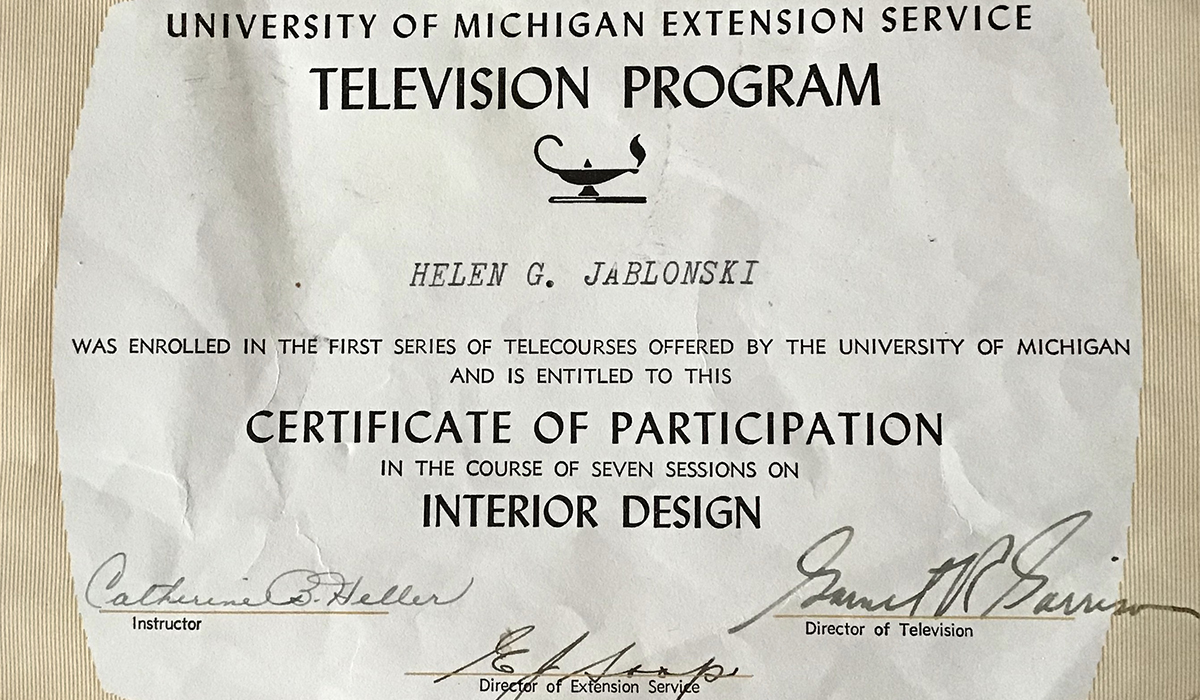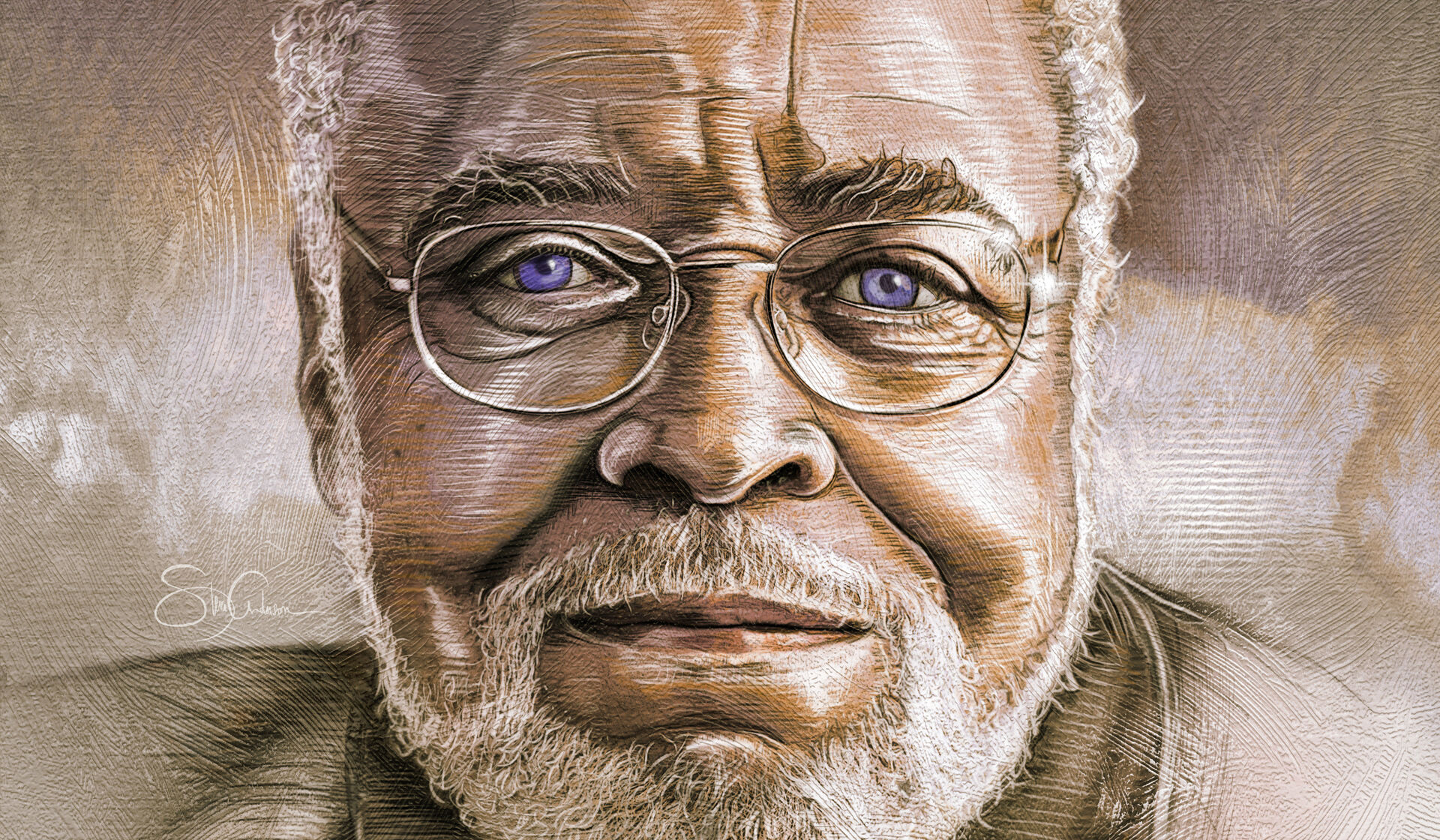During the 1950s, Americans embraced television as a means of entertainment, leading to its exponential growth over the course of the decade. The University leveraged that enthusiasm to offer not only entertainment but also, for a short while, a 1950s version of remote learning.
Among those taking advantage of the U-M “telecourse” program was Helen G. Jablonski, who earned a 1951 certificate in interior decorating (pictured).
“She watched from home, taking care of my eldest brother as a full-time homemaker,” said Nancy Jablonski Nuell, ’79. “Knowing my mom, she would have adjusted her daily schedule to watch the class. My siblings and I were all surprised to find her interior design certificate, so my guess is that she took the class as personal enrichment.”
Many other subjects got telecourse offerings, including biology, astronomy, photography, political science, engineering, business, and fishing.
The concept began with the establishment of the U-M Television Center (TVC) in early 1950, based in the Speech Department offices of Angell Hall. The very first TVC projects were plays produced by students and faculty, rehearsed on campus in Ann Arbor, and performed for live broadcast at the WWJ-TV studios in Detroit. That summer, WWJ officials proposed “The University of Michigan Hour” for Sunday afternoons. Each episode would be split between three 20-minute instructional telecourses, followed by a “tour” showcase of various aspects of University operations.
U-M agreed to the idea, making it among the first universities to produce educational programming. Though anyone could view the courses, WWJ and the University offered certificates of participation for paid registrants. The fees were nominal, mainly to help cover the costs of production: $2 for the 14-week courses and $1 for the seven-week courses. Registration included syllabi, supplementary written materials, reading lists, and examinations sent through the mail. Similar to the drama plays, telecourse production and rehearsals took place at the TVC in Angell Hall, then the faculty and student staff put on the live broadcast in Detroit.
In September 1951, WJIM in Lansing and WKZO in Kalamazoo began simultaneous broadcast of the live WWJ programs via a microwave relay hookup. In fall 1952, the format of “The University of Michigan Hour” was changed, with the telecourse entries expanded to 30 minutes each and the tour separated into a Saturday evening broadcast.
The telecourse program was discontinued in 1954, due to both declining numbers of paid registrants and the onset of other institutions offering telecourses for official course credits, which was a practice U-M did not offer. The TVC would continue operations, eventually merging with the U-M Audio-Visual Education Center in 1978 to form the Media Resources Center, more commonly known as Michigan Media. Michigan Media ceased operations in the late 1980s, but its spirit carries on in the form of the WOLV TV student-run television station, founded in 1994.
Nuell said, for her mother, the certificate represents an aspiration toward excellence. “My mom never went to college, but she and my dad sacrificed a lot to enable all of their five children to go to college, with three of us graduating from U-M,” said Nuell. “It was definitely a point of pride for both of them, and it’s certainly a fun look to see how technology has evolved and has become the backbone of teaching, especially in the midst of the pandemic.”
Gregory Lucas-Myers, ’10, is senior assistant editor of Michigan Alumnus.





